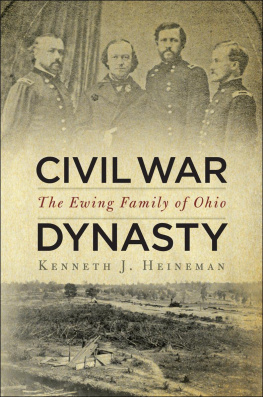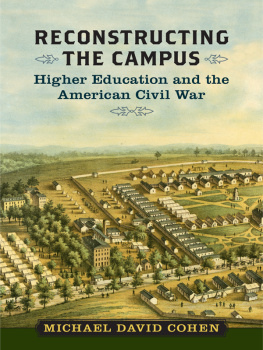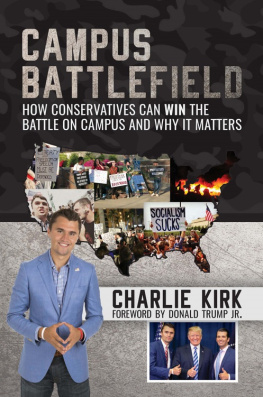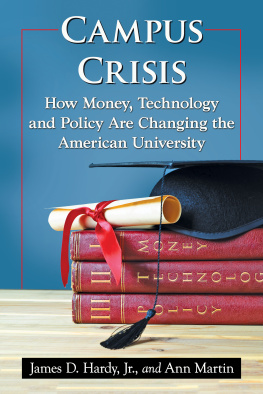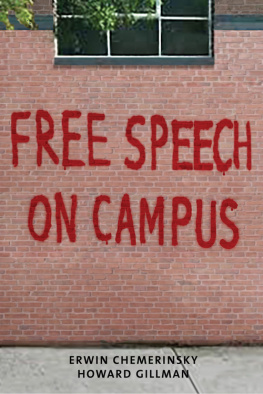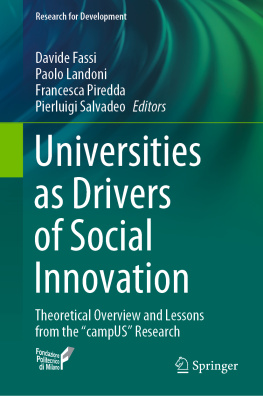Kenneth J. Heineman - Campus Wars: The Peace Movement at American State Universities in the Vietnam Era
Here you can read online Kenneth J. Heineman - Campus Wars: The Peace Movement at American State Universities in the Vietnam Era full text of the book (entire story) in english for free. Download pdf and epub, get meaning, cover and reviews about this ebook. year: 1994, publisher: NYU Press, genre: Politics. Description of the work, (preface) as well as reviews are available. Best literature library LitArk.com created for fans of good reading and offers a wide selection of genres:
Romance novel
Science fiction
Adventure
Detective
Science
History
Home and family
Prose
Art
Politics
Computer
Non-fiction
Religion
Business
Children
Humor
Choose a favorite category and find really read worthwhile books. Enjoy immersion in the world of imagination, feel the emotions of the characters or learn something new for yourself, make an fascinating discovery.
- Book:Campus Wars: The Peace Movement at American State Universities in the Vietnam Era
- Author:
- Publisher:NYU Press
- Genre:
- Year:1994
- Rating:4 / 5
- Favourites:Add to favourites
- Your mark:
Campus Wars: The Peace Movement at American State Universities in the Vietnam Era: summary, description and annotation
We offer to read an annotation, description, summary or preface (depends on what the author of the book "Campus Wars: The Peace Movement at American State Universities in the Vietnam Era" wrote himself). If you haven't found the necessary information about the book — write in the comments, we will try to find it.
At the same time that the dangerous war was being fought in the jungles of Vietnam, Campus Wars were being fought in the United States by antiwar protesters. Kenneth J. Heineman found that the campus peace campaign was first spurred at state universities rather than at the big-name colleges. His useful book examines the outside forces, like military contracts and local communities, that led to antiwar protests on campus.
Herbert Mitgang, The New York Times
Shedding light on the drastic change in the social and cultural roles of campus life, Campus Wars looks at the way in which the campus peace campaign took hold and became a national movement.
History Today
Heinemans prodigious research in a variety of sources allows him to deal with matters of class, gender, and religion, as well as ideology. He convincingly demonstrates that, just as state universities represented the heartland of America, so their student protest movements illustrated the real depth of the anguish over US involvement in Vietnam. Highly recommended.
Choice
Represents an enormous amount of labor and fills many gaps in our knowledge of the anti-war movement and the student left.
Irwin Unger, author of These United States
The 1960s left us with some striking images of American universities: Berkeley activists orating about free speech atop a surrounded police car; Harvard SDSers waylaying then-Secretary of Defense Robert McNamara; Columbia student radicals occupying campus buildings; and black militant Cornell students brandishing rifles, to name just a few. Tellingly, the most powerful and notorious image of campus protest is that of a teenage runaway, arms outstretched in anguish, kneeling beside the bloodied corpse of Jeff Miller at Kent State University.
While much attention has been paid to the role of elite schools in fomenting student radicalism, it was actually at state institutions, such as Kent State, Michigan State, SUNY, and Penn State, where anti-Vietnam war protest blossomed. Kenneth Heineman has pored over dozens of student newspapers, government documents, and personal archives, interviewed scores of activists, and attended activist reunions in an effort to recreate the origins of this historic movement. In Campus Wars, he presents his findings, examining the involvement of state universities in military research and the attitudes of students, faculty, clergy, and administrators thereto and the manner in which the campus peace campaign took hold and spread to become a national movement. Recreating watershed moments in dramatic narrative fashion, this engaging book is both a revisionist history and an important addition to the chronicle of the Vietnam War era.
Kenneth J. Heineman: author's other books
Who wrote Campus Wars: The Peace Movement at American State Universities in the Vietnam Era? Find out the surname, the name of the author of the book and a list of all author's works by series.


